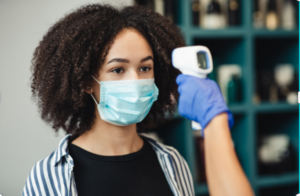For events still happening in-person, health and safety are top priorities
As the 2022 awards season gets underway, the usual celebrations and glamorous red carpets have been altered, postponed, or canceled due to the Omicron variant of the COVID-19 virus. The Grammys were delayed indefinitely, the Critics’ Choice Awards remain in limbo after a December cancellation announcement, and numerous concerts and festivals are in a state of flux. For event planners, the upheaval can be unnerving. But by adapting events of all sizes to virtual environments, you can salvage your 2022 calendar and continue meeting clients’ needs.
Whether you’re reworking a stadium-sized convention or a more intimate gathering, there are some general steps to follow for best results:
- Prioritize attendee participation: You’ll need to rethink your in-person event for a digital audience – one that has been going to virtual events for two years. That means scheduling shorter presentation segments, spreading events out over multiple days, and creating countless opportunities for attendees to engage (e.g., virtual hubs, networking rooms, live chat, etc.).
- Prepare and test your tech: Even the best content and most dynamic speakers can fall flat if your tech malfunctions. Ensure your audio and visual components are fully operational, verify compatibility with your chosen event platform, and conduct practice runs to check for potential hiccups. And still, have a plan B in case unexpected problems arise on Event Day.
- Communicate, communicate, communicate: Once you’ve decided to go virtual, spread the word far and wide through the channels most likely to reach your audience. Make the registration process simple and seamless. And give attendees all the information they’ll need to get logged on for the event. After, be sure to package and send out key moments and information to get additional mileage out of your event content.
 On the other hand, if you opt to move forward with an in-person event, health and safety should be your top priorities. That means clear guidelines for screening, sanitizing, and testing. Smart thermometers, infrared scanners, and thermal imaging systems offer no-contact ways to check attendees for measurable symptoms. UV lights and lamps and hydrogen peroxide-based disinfectants can help clean large spaces. And hand sanitizer and mask protocols for attendees can ensure everyone does their part to prevent the spread of the virus. What works best for your event will ultimately depend on your venue, your budget, and local regulations. But what’s most important is taking the proper steps to keep your event space clean and hygienic.
On the other hand, if you opt to move forward with an in-person event, health and safety should be your top priorities. That means clear guidelines for screening, sanitizing, and testing. Smart thermometers, infrared scanners, and thermal imaging systems offer no-contact ways to check attendees for measurable symptoms. UV lights and lamps and hydrogen peroxide-based disinfectants can help clean large spaces. And hand sanitizer and mask protocols for attendees can ensure everyone does their part to prevent the spread of the virus. What works best for your event will ultimately depend on your venue, your budget, and local regulations. But what’s most important is taking the proper steps to keep your event space clean and hygienic.
Though uncertainty about the pandemic remains, flexibility, virtual pivots, and a focus on safety can help you make the most of the year’s events.
Contact Glow Global Events today to adapt your event to a virtual environment or discuss your forthcoming event needs.

